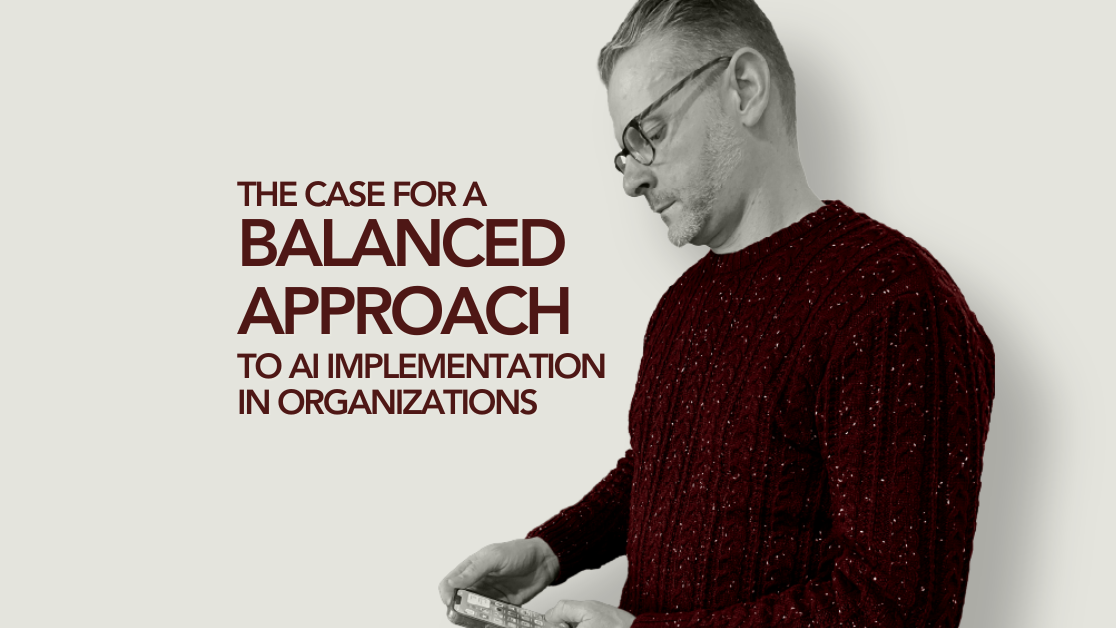The Case for a Balanced Approach to AI Implementation in Organizations

In the dynamic landscape of artificial intelligence, organizations face the quintessential challenge: how to effectively harness AI to unlock transformative opportunities and drive innovation.  Traditionally, technology implementations have revolved around centralized systems designed for efficiency. However, the unique nature of AI demands a departure from this norm. This article advocates for a balanced approach that melds strategic oversight with grassroots exploration, allowing for both control and innovation.
Traditionally, technology implementations have revolved around centralized systems designed for efficiency. However, the unique nature of AI demands a departure from this norm. This article advocates for a balanced approach that melds strategic oversight with grassroots exploration, allowing for both control and innovation.
Considerations to Help You Move Your Organization Forward with AI
1. The Importance of Rethinking Centralized AI Implementation
Centralized, top-down approaches, while efficient, can inadvertently stifle the organic growth and creative potential AI offers. These methods often rely on predetermined use cases and lack the flexibility to evolve with AI’s rapid advancements. To truly harness AI, we need structures that allow for adaptability and spontaneous innovation.
2. The Imperative for Experimentation and R&D
AI is not a plug-and-play technology—its value unfolds through continuous exploration and experimentation. Organizations must embrace a culture of research and development, treating AI projects more like dynamic workshops than rigid IT deployments. This shift requires a mindset that is open to exploration, ready to pivot based on new insights and learnings.
3. Harnessing Domain Expertise
The most transformative AI applications often spring from the minds of those who know their domains inside out. Rather than leaving AI implementation solely in the hands of IT departments, organizations should tap into the rich insights of domain experts across different fields. These professionals can pinpoint precise areas where AI can make a significant impact, turning everyday challenges into opportunities for innovation.
4. AI as a Collaborative Endeavor
Unlike traditional software that performs specific tasks, AI thrives on interaction and iteration. It should be viewed as a knowledgeable partner that collaborates with human experts, not just a tool that executes commands. This perspective encourages a more distributed approach to AI implementation, where various stakeholders actively engage with AI systems to refine and enhance their functionality.
5. Building a Competitive Edge
In the era of AI, a competitive edge stems from an organization’s ability to uniquely apply AI to enhance core operations and strategies. This advantage is less likely to arise from a single centralized effort and more from a culture that promotes widespread experimentation and agile adaptation.
Final Thoughts on a Healthy Oversight-Freedom Balance
A dual approach to AI implementation—combining clear strategic direction with empowered decentralized exploration—provides the optimal path forward. Organizations should establish a framework that supports AI adoption while encouraging diverse teams to experiment, learn, and innovate. This approach ensures that AI initiatives are not only aligned with overarching business strategies but are also flexible enough to leverage unexpected opportunities and insights.
By fostering an environment where strategic oversight coexists with exploratory freedom, organizations can fully realize the potential of AI, transforming challenges into catalysts for growth and innovation.
If you’d like to discuss ways to pave your organization’s path forward with AI, drop me a line!
